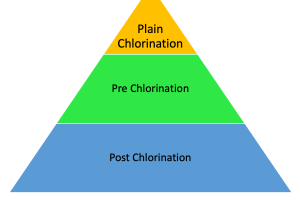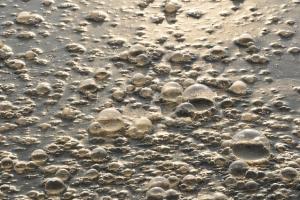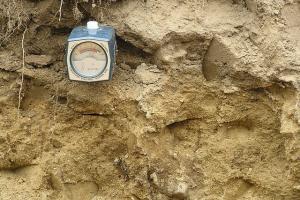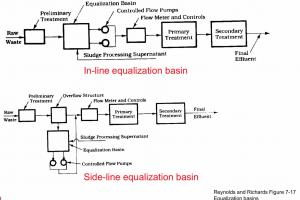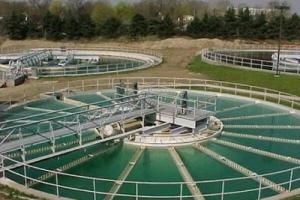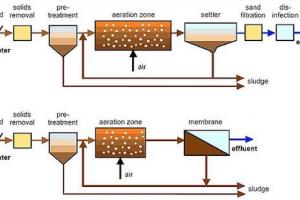What is the Composition of Wastewater?
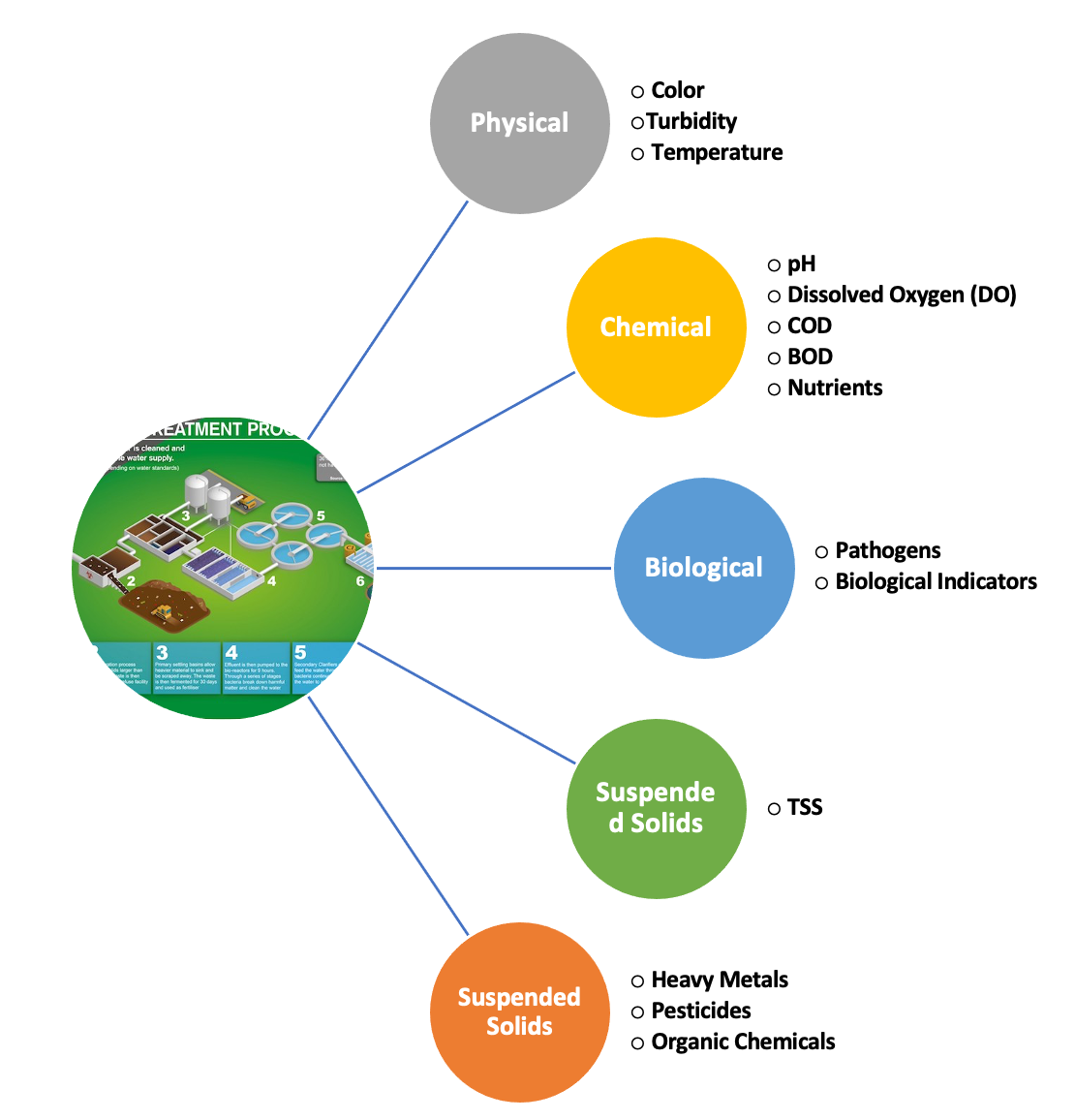
Constituents of Water
Wastewater is composed of a complex mixture of different substances that are present in the water supply and are discharged from various sources such as households, industries, and commercial establishments. The composition of wastewater can vary depending on the sources and local conditions, but generally, it contains the following components:
Water:
Wastewater is primarily made up of water, which includes both freshwater used in households and industrial processes as well as natural water sources that have been contaminated.
Organic Matter:
Wastewater contains a significant amount of organic matter, which includes substances like food waste, human and animal waste, oils, fats, proteins, and plant materials. These organic compounds can undergo biological degradation and can serve as a source of energy for microorganisms in wastewater treatment processes.
Nutrients:
Wastewater often contains nutrients such as nitrogen and phosphorus, which originate from human and animal waste, detergents, and agricultural runoff. These nutrients can cause water pollution and contribute to the growth of algae and other aquatic plants, leading to eutrophication if not properly treated.
Suspended Solids:
Wastewater can carry suspended solids, which are tiny particles of organic and inorganic matter that remain suspended in water. These solids can include sediment, soil, food particles, paper, plastics, and other debris.
![]() Also See: Classification of Solids in WasteWater
Also See: Classification of Solids in WasteWater
Chemicals:
Wastewater may contain a wide range of chemicals originating from various sources. These can include heavy metals (e.g., lead, mercury), toxic organic compounds (e.g., pesticides, solvents), pharmaceuticals, cleaning agents, and industrial chemicals. These substances can have detrimental effects on human health and the environment if not effectively removed or treated.
Pathogens:
Wastewater can harbor pathogens such as bacteria, viruses, and parasites, particularly from human and animal waste. These microorganisms can pose significant health risks if the wastewater is not adequately treated before being discharged into the environment or reused.
pH and Temperature:
The pH level and temperature of wastewater can vary depending on the sources and treatment processes. pH is a measure of acidity or alkalinity, and extreme values can affect the efficiency of wastewater treatment. Temperature affects the biological processes in wastewater treatment, with higher temperatures generally enhancing microbial activity.
Characteristics of Constituents of Waste Water
Constituents of Waste Water are characterized in terms of their physical, chemical, and biological composition
Physical Characteristics
Color:
Wastewater can have different colors ranging from gray or brown to black, depending on the sources and the presence of organic or inorganic substances.
Turbidity:
Turbidity refers to the cloudiness or haziness of wastewater caused by suspended solids. It is measured using a turbidity meter and indicates the level of particle contamination.
Temperature:
The temperature of wastewater can vary depending on the source and climatic conditions. Higher temperatures can affect microbial activity and treatment processes.
Chemical Characteristics:
pH:
pH is a measure of the acidity or alkalinity of wastewater. The pH scale ranges from 0 to 14, with 7 being neutral. Wastewater can exhibit a wide pH range, and extreme values can impact treatment processes and environmental effects.
Dissolved Oxygen (DO):
DO is a crucial parameter that indicates the level of oxygen present in wastewater. It is essential for supporting aerobic biological processes and maintaining the health of aquatic ecosystems.
Chemical Oxygen Demand (COD):
COD represents the amount of oxygen required to chemically oxidize organic and inorganic substances in wastewater. It is an indicator of the organic strength and pollution potential of wastewater.
Biochemical Oxygen Demand (BOD):
BOD measures the amount of oxygen consumed by microorganisms during the biological degradation of organic matter in wastewater. It reflects the organic load and the degree of biodegradability.
Nutrients:
Wastewater can contain nutrients like nitrogen and phosphorus, which contribute to eutrophication in receiving water bodies if not effectively removed during treatment. The typical composition of wastewater based on strength. The important characteristics measured in wastewater included...
- Biochemical Oxygen Demand (BOD) [100-300 mg/L as O2]
- Suspended solids (SS) [100 – 350 mg/L]
- Settleable solids [5-20 mL/L]
- Total Kjeldahl nitrogen (TKN) [20-80 mg/L]
- Total Phosphorus [5-20 mg/L as P]
A typical solids analysis of wastewater, of the total solids, 50% is dissolved, 50% suspended. Of the suspended solids, 50% will settle. Industrial activity changes the composition of wastewater, often introducing toxic substances such as chromium and cadmium from plating operations.
Biological Characteristics:
Pathogens:
Wastewater can carry various pathogenic microorganisms, including bacteria, viruses, and parasites. These pose health risks and require proper disinfection or removal through treatment processes.
Biological Indicators:
Microbial indicators such as fecal coliforms or Escherichia coli (E. coli) are used to assess the presence of fecal contamination in wastewater and indicate the potential for disease transmission.
Suspended Solids:
![]() Also See: Classification of Solids in WasteWater
Also See: Classification of Solids in WasteWater
Total Suspended Solids (TSS):
TSS refers to the total concentration of suspended solids in wastewater, including both organic and inorganic particles. It affects the clarity of water and can impact treatment processes.
Toxicity:
Wastewater may contain toxic substances, including heavy metals, organic chemicals, and pesticides. Toxicity tests are conducted to evaluate the potential harmful effects of wastewater on organisms and ecosystems.
It is important to note that the composition of wastewater can differ significantly depending on the location, local regulations, industrial activities, and the efficiency of wastewater treatment systems in place. Wastewater treatment processes aim to remove or reduce these contaminants to protect human health and the environment before the treated water is discharged or reused.




